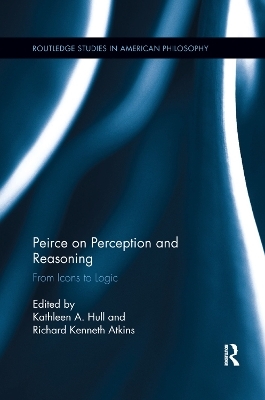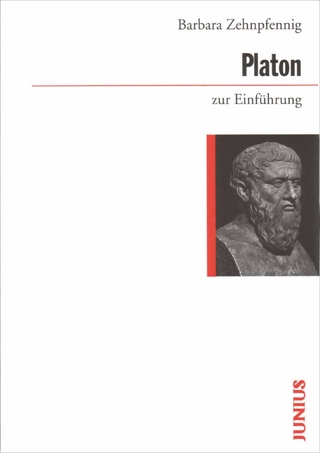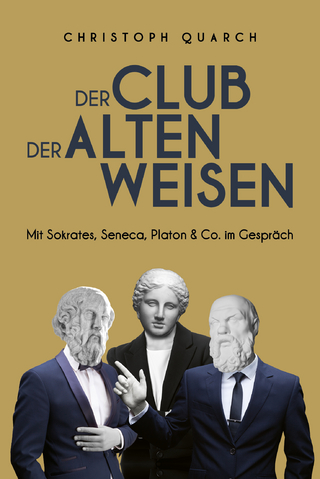
Peirce on Perception and Reasoning
Routledge (Verlag)
978-0-367-37240-8 (ISBN)
The founder of both American pragmatism and semiotics, Charles Sanders Peirce (1839–1914) is widely regarded as an enormously important and pioneering theorist. In this book, scholars from around the world examine the nature and significance of Peirce’s work on perception, iconicity, and diagrammatic thinking. Abjuring any strict dichotomy between presentational and representational mental activity, Peirce’s theories transform the Aristotelian, Humean, and Kantian paradigms that continue to hold sway today and, in so doing, forge a new path for understanding the centrality of visual thinking in science, education, art, and communication. The essays in this collection cover a wide range of issues related to Peirce’s theories, including the perception of generality; the legacy of ideas being copies of impressions; imagination and its contribution to knowledge; logical graphs, diagrams, and the question of whether their iconicity distinguishes them from other sorts of symbolic notation; how images and diagrams contribute to scientific discovery and make it possible to perceive formal relations; and the importance and danger of using diagrams to convey scientific ideas. This book is a key resource for scholars interested in Perice’s philosophy and its relation to contemporary issues in mathematics, philosophy of mind, philosophy of perception, semiotics, logic, visual thinking, and cognitive science.
Kathleen A. Hull resides in Boston and taught for over a decade at New York University and Rutgers University, New Brunswick. Her research and publications have focused on Charles Sanders Peirce and pedagogy. She has won awards for teaching excellence, creative thought, and inspiring students with a love of learning. Richard Kenneth Atkins is Assistant Professor of Philosophy at Boston College. He is the author of Peirce and the Conduct of Life: Sentiment and Instinct in Ethics and Religion (2016) and Puzzled?! An Introduction to Philosophizing (2015) as well as numerous essays.
Chapter One: What Do We Perceive?: How Peirce "Expands Our Perception"
Aaron Bruce Wilson
Chapter Two: Perception as Inference
Evelyn Vargas
Chapter Three: Inferential Modeling of Percept Formation: Peirce’s Fourth Cotary Proposition
Richard Kenneth Atkins
Chapter Four: "Things Unreasonably Compulsory": Hume and Peirce on Perceiving Necessity
Catherine Legg
Chapter Five: The Iconic Ground of Gestures: Peirce, Wittgenstein, and Foucault
Rossella Fabbrichesi
Chapter Six: Foundations for Semeiotic Aesthetics: Mimesis and Iconicity
Kelly A. Parker
Chapter Seven : Semiotics, Schemata, Diagrams and Graphs: A New Form of Diagrammatic Kantism by Peirce
Claudio Paolucci
Chapter Eight : The Chemistry of Relations: Peirce, Perspicuous Representations, and Experiments with Diagrams
Chiara Ambrosio and Chris Campbell
Chapter Nine : Graphs as Images vs. Graphs as Diagrams: A Problem at the Intersection of Semiotics and Didactics
Michael May
Chapter Ten: C.S. Peirce and the Teaching of Drawing
Seymour Simmons III
Chapter Eleven : What is Behind the Logic of Scientific Discovery?: Aristotle and Charles S. Peirce on Imagination
Christos A. Pechlivanidis
Chapter Twelve: The Iconic Peirce: Geometry, Spatial Intuition, and Visual Imagination
Kathleen A. Hull
Chapter Thirteen: Two Dogmas of Diagrammatic Reasoning: A View from Existential Graphs
Ahti-Viekko Pietarinen and Francesco Bellucci
| Erscheinungsdatum | 15.07.2019 |
|---|---|
| Reihe/Serie | Routledge Studies in American Philosophy |
| Zusatzinfo | 17 Line drawings, black and white; 8 Halftones, black and white; 25 Illustrations, black and white |
| Verlagsort | London |
| Sprache | englisch |
| Maße | 152 x 229 mm |
| Gewicht | 312 g |
| Themenwelt | Geisteswissenschaften ► Philosophie ► Philosophie Altertum / Antike |
| Geisteswissenschaften ► Philosophie ► Philosophie der Neuzeit | |
| Geisteswissenschaften ► Psychologie ► Allgemeine Psychologie | |
| Geisteswissenschaften ► Psychologie ► Verhaltenstherapie | |
| ISBN-10 | 0-367-37240-1 / 0367372401 |
| ISBN-13 | 978-0-367-37240-8 / 9780367372408 |
| Zustand | Neuware |
| Informationen gemäß Produktsicherheitsverordnung (GPSR) | |
| Haben Sie eine Frage zum Produkt? |
aus dem Bereich


